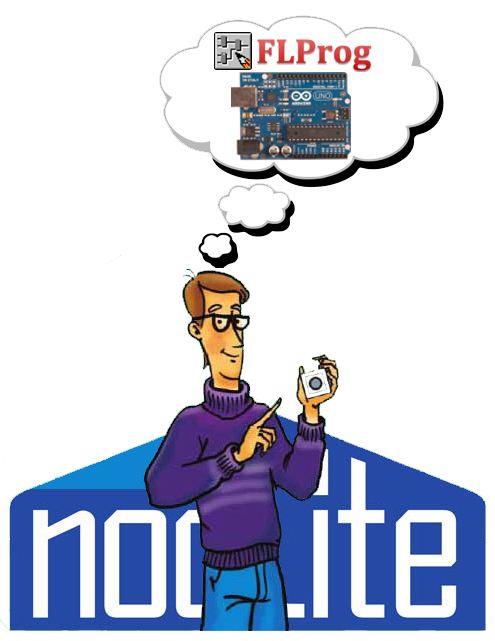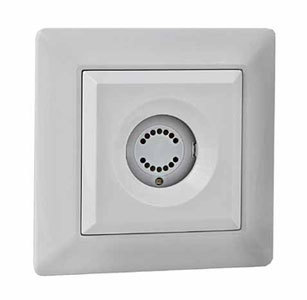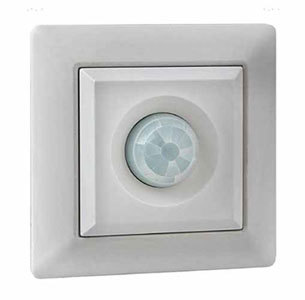And again - NooLite + FLProg

Good day. I am the developer of the FLProg program, and today I want to continue the topic of the bundle of equipment of the company Nootech and the FLProg program.
Earlier ( one , two ) I already wrote about the appearance in the program of support for the transmitter MT1132 and the power units under its control. Now, with the release of version 1.15, there is support for the MR1132 receiver module and three wireless sensors - PT111, PT112 and PM111.


')
Let's look at them in more detail.
Receiver MR1132 .
Module MR1132 is designed to receive control commands when working in the NooLite system. The module is controlled via a serial UART interface.
Specifications.
| Parameter | Value |
|---|---|
| Number of cells to bind | 32 |
| Supply Voltage (UP) | 4.75… 5.5V |
| Consumption current | 2.2 ... 3.2 mA |
| Input Maximum (50 Ohm) | -20 dBm |
| Radio transmitter frequency | 433.92 MHz (± 0.075 MHz) |
| Maximum distance to transmitter | 50 m. |
| Speed of receiving / transmitting data via UART | 9600 bps |
| Operating temperature | 0 ... +40 ° |
Wiring diagram
Please note that the module supply voltage and levels for UART are 5V. If you intend to use it on systems with 3.3V logic levels, you will need to use level converters.
Temperature and humidity sensor PT111.
The PT111 temperature and humidity sensor is designed to measure microclimate parameters (temperature and humidity) or use as a thermostat (hygrostat).
Specifications.
| Parameter | Value |
|---|---|
| Temperature measurement range | 20 …. + 50 ° C |
| Relative humidity measurement range | 1 ... 99% |
| Temperature measurement accuracy | |
| In the range from -10 to + 50 ° | 0.5 ° C |
| In the range of -20 to -10 | 1 ° C |
| Humidity measurement accuracy | 4.5% |
| Temperature adjustment range | 5 ... 30 ° |
| Humidity adjustment range | 5 ... 95% |
| Operating temperature / relative humidity range | -20 …. + 50 ° / 10 ... 80% |
| Radio transmitter frequency | 433.92 MHz (± 0.075 MHz) |
| Radio transmitter power | <5 mW |
| Maximum distance to receiver | 50 m |
| Type of sensor batteries | 2xAAA (LR03) Alkaline 1.5V |
| Battery life from one set of batteries | not less than 1 year |
OPERATING MODES OF THE SENSOR
Mode " SENSOR "
In this mode, the sensor transmits information about the current temperature to the receiver MR1132
Sensor polling period ~ 64 seconds.
To reduce power consumption, data transmission by radio occurs only at the moment when the value of temperature or relative humidity changes by more than 0.5 ° C and 2%, respectively.
If within 1 hour the temperature change does not exceed the specified limits, then the sensor automatically transmits information with the current temperature.
This allows you to determine that the sensor is working properly. The “Threshold” knob in the “Sensor” mode is not used.
TERMOSTAT mode
In this mode, the sensor performs the function of a thermostat.
This allows you to use the sensor to maintain a constant temperature in the premises of electric heaters (fan heaters, convectors, heaters).
The sensor acts as a device that sends on / off commands.
When the temperature drops below the set threshold, the command to turn on is transmitted. When the temperature reaches the set threshold, an on / off command is transmitted. Commands are transmitted at the time of temperature transition through the threshold value and then repeated after 30 minutes.
Repeating the command allows the heater to assume the required state, even if the previous on / off command was missed due to interference.
Mode " GIGROSTAT "
In this mode, the sensor performs the function of a hygrostat.
This allows you to use the sensor to control the exhaust fan in areas where high humidity is undesirable (bathrooms, bathrooms).
The sensor acts as a device that sends on / off commands.
When the humidity exceeds the set threshold, the command to turn on is transmitted. When the humidity drops to the set threshold, the command to turn off is transmitted. On / off commands are transmitted at the moment of passing the humidity through the threshold value and then repeated after 30 minutes.
Repeating the command allows the receiver to receive the necessary commands guaranteed, even if the previous on / off command was missed due to interference.
PT112 temperature sensor.
PT112 temperature sensor is designed to measure temperature or use as a thermostat.
Specifications.
| Parameter | Value |
|---|---|
| Temperature measurement range | 20 …. + 50 ° C |
| Temperature measurement accuracy | |
| In the range from -10 to + 50 ° | 0.5 ° C |
| In the range of -20 to -10 | 1 ° C |
| Temperature adjustment range | 5 ... 30 ° |
| Operating temperature / relative humidity range | -20 …. + 50 ° / 10 ... 80% |
| Radio transmitter frequency | 433.92 MHz (± 0.075 MHz) |
| Radio transmitter power | <5 mW |
| Maximum distance to receiver | 50 m |
| Type of sensor batteries | 2xAAA (LR03) Alkaline 1.5V |
| Battery life from one set of batteries | not less than 1 year |
OPERATING MODES OF THE SENSOR
Mode " SENSOR "
In this mode, the sensor transmits information about the current temperature to the receiver MR1132
Sensor polling period ~ 64 seconds.
To reduce power consumption, data transmission by radio occurs only at the moment when the temperature value changes by more than 0.5 ° C.
If within 1 hour the temperature change does not exceed the specified limits, then the sensor automatically transmits information with the current temperature.
This allows you to determine that the sensor is working properly. The “Threshold” knob in the “Sensor” mode is not used.
TERMOSTAT mode
In this mode, the sensor performs the function of a thermostat.
This allows you to use the sensor to maintain a constant temperature in the premises of electric heaters (fan heaters, convectors, heaters).
The sensor acts as a device that sends on / off commands.
When the temperature drops below the set threshold, the command to turn on is transmitted. When the temperature reaches the set threshold, the command to turn off is transmitted. On / off commands are transmitted at the moment of temperature transition through the threshold value and then repeated after 30 minutes.
Repeating the command allows the heater to assume the required state, even if the previous on / off command was missed due to interference.
For these two types of sensors it is also possible to read the value from the additional analog input of the sensor. This value is represented by an 8-bit unsigned number. This number is equal to 255, since the input has a pull-up to the sensor supply minus through a 390 kΩ resistor. When closing the pads 1 and 2, the read number is 0. This input can be used to control the brightness (using a photoresistor with a resistance of 100-500 kOhm) or as a water leakage sensor. The sensing element is connected to the pads 1 and 2.
An analog input is read every time sensors transmit parameters.
Motion Sensor PM111.
Specifications.
| Parameter | Value |
|---|---|
| The range of the thermal sensor | 0.5 ... 5m |
| Photosensor threshold | 1 ... 100 lm |
| Turn-on time after stopping | 5 seconds ... 21.8 minutes |
| Radio transmitter frequency | 433.92 MHz (± 0.075 MHz) |
| Radio transmitter power | <5 mW |
| Maximum distance to receiver | 50 m |
| Type of sensor batteries | 2xAAA (LR03) Alkaline 1.5V |
| Battery life from one set of batteries | not less than 1 year |
Sensor operation
When moving objects appear with a temperature above the environment in the sensor's range, it sends an activation command over the radio channel. After a specified time after the termination of movement in the zone of the sensor, he gives the command to turn off. In addition, the PM111 sensor is equipped with a photosensor for measuring illumination, which eliminates the response of the sensor in the daytime.
The sensitivity of the thermal sensor, the threshold of illumination and the time of switching on the light after stopping the movement are regulated.
Notes
- The sensitivity of the thermal sensor depends on the direction of movement, size, temperature and speed of the object. The worst sensitivity is obtained when driving straight to or from the sensor. The best is perpendicular to this direction.
- When setting the maximum sensitivity of the thermal sensor, false positives are possible. If this is unacceptable for you, then slightly desensitize the sensitivity of the thermal sensor with the Sensitivity knob.
- The range of adjustment of the threshold of the photosensor is indicated approximately, since the light sensors have a large scatter.
- A hysteresis is introduced into the light measurement algorithm, therefore, the thermal sensor is switched off at a higher light level than its activation.
- The range of the transmitter depends on the relative orientation of the receiver and transmitter antennas, the presence of obstacles between them and the freshness of the sensor batteries. When the battery is completely discharged, the range can be significantly reduced.
- The discharge rate of the batteries depends on the current settings and the overall illumination of the room. The longest service life will be in the provisions, “Turn-on time” –22 min, “Illumination” - minimum, “Sensitivity” - minimum, with good illumination.
Modes of operation
If the illumination near the sensor is higher than that set by the “Illumination” regulator, then the sensor is in standby mode. At the same time, its current consumption is minimal (less than 1 μA), and the thermal motion sensor is disconnected.
When the illumination falls below a predetermined level, the sensor goes into standby mode.
The heat sensor turns on, and the current consumption rises to 75 µA (approximately).
Reverse transition to the standby mode occurs at a slightly higher level of illumination to eliminate multiple transitions there - back at sunset or dawn.
If the “Illumination” regulator is located near the maximum (“On” position), then the sensor
stays in standby mode always, with any light.
Standby mode
This mode is activated automatically when the illumination falls below the one set by the “Illumination” regulator or forcibly, if the “Illumination” regulator is in the “On” position.
In this mode, the thermal sensor detects the movement of warm objects in the zone of its action.
The size of the thermal sensor's range of action can be adjusted with the Sensitivity control.
When motion is detected, the sensor transmits a command to the receiver by radio.
When the movement has stopped, the sensor counts the interval set by the "Turn-on Time" knob and transmits a light-off command.
If movement is detected again during the interval, the counting begins anew.
Commands on and off are transmitted for reliability twice, with an interval of 2 seconds.
After the first command has been given, the heat sensor turns off for 3.5 seconds, which means that the sensor does not feel the movement for 3.5 seconds after giving the shutdown command.
All sensors can control the power supply charge. When a battery discharge is detected, the sensor reports this with three short flashes of the LED indicator, repeated after 8 seconds. Also the corresponding message is sent to the receiver.
The FLProg program supports all the capabilities of these sensors.
An example of working with sensors in the program FLProg.
I want to thank smart_alex for his article . In many respects only thanks to her, I coped with the analysis of data coming from the sensors. Unfortunately, there is practically no information on the manufacturer’s website for developers.
Source: https://habr.com/ru/post/396475/
All Articles